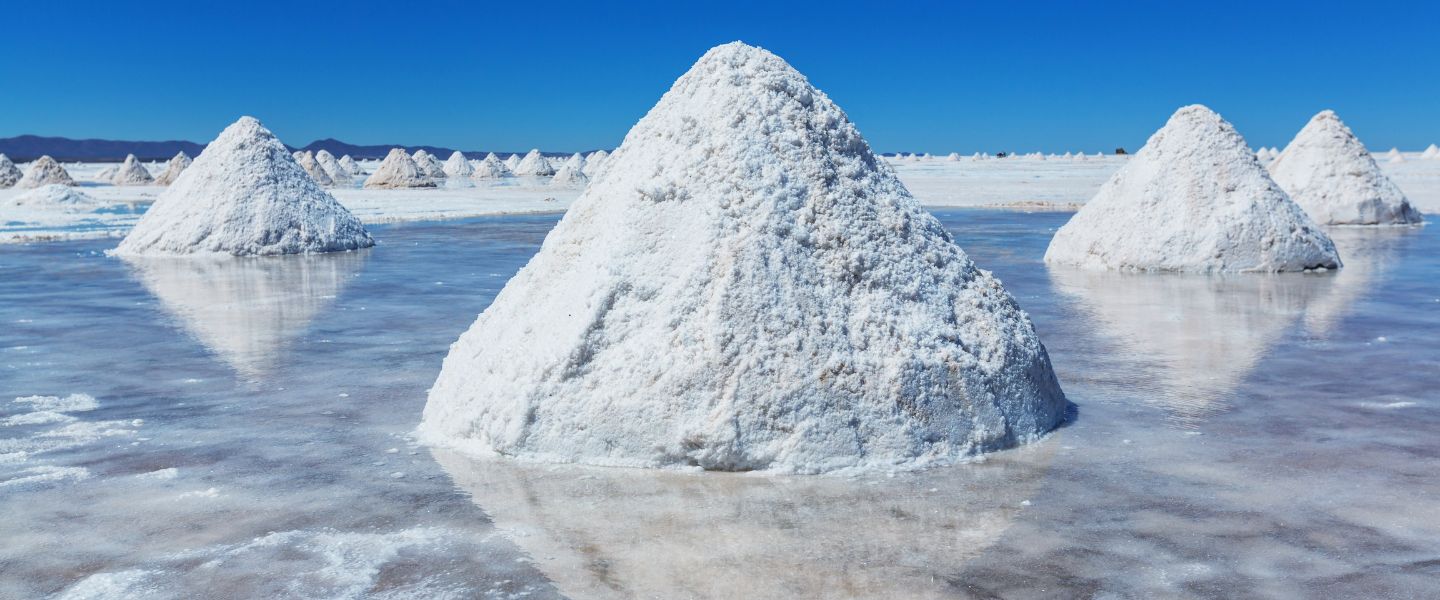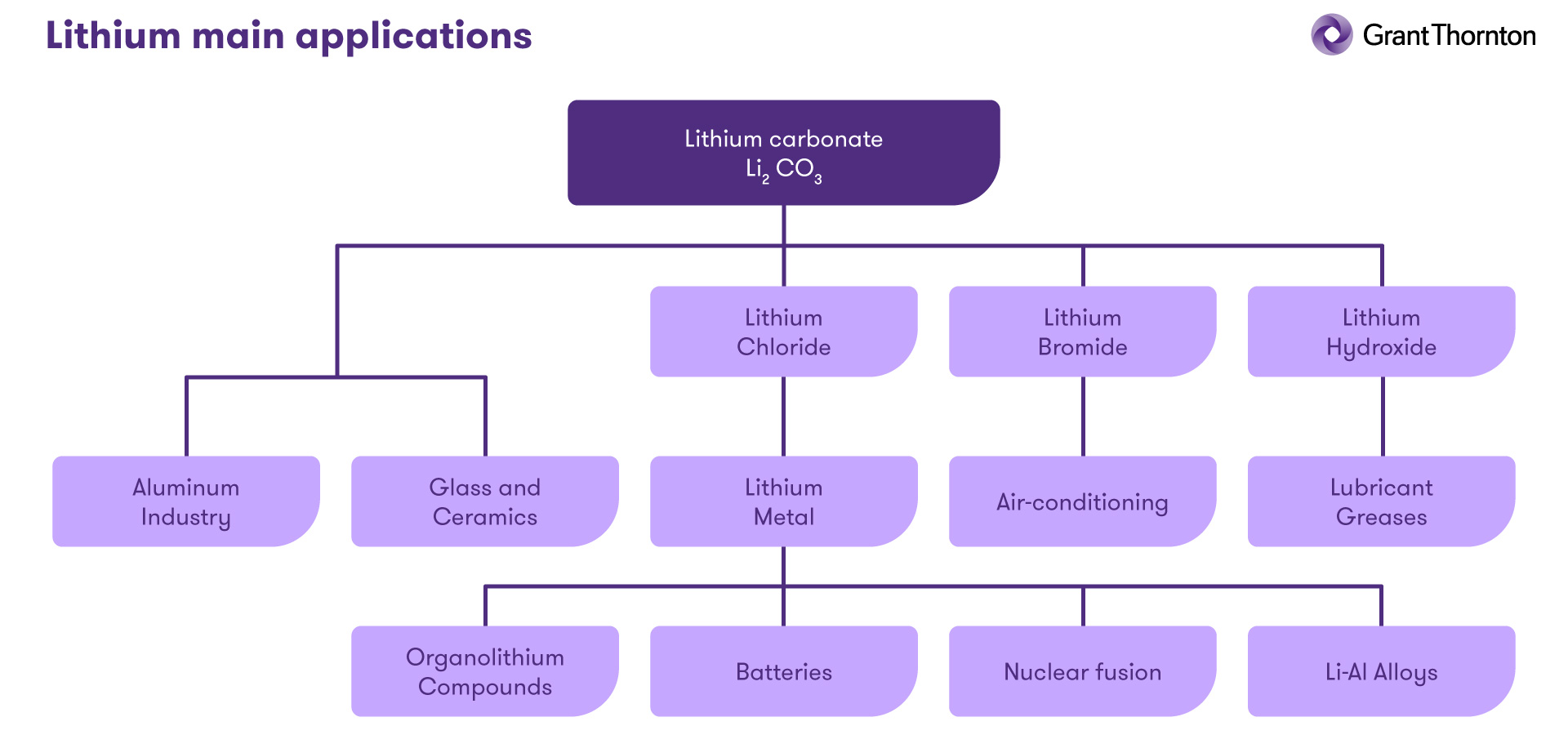-
Compliance
Assistance in the design, implementation and monitoring of Compliance programs within the framework of local and international regulations (FCPA, Corporate Criminal Responsibility Law), including course delivery.
-
Sustainability
Learn how our sustainability services can help you go beyond and build a strong reputation, attract committed investors and generate long-term sustainable financial results.
-
Forensic
The services offer includes expert advice in litigation resolution and the development of procedures in legal/digital forensics and cybersecurity.
-
Human Capital solutions
Grant Thornton's Human Capital division has a team of professionals determined to accompany individuals and organizations throughout the relationship between the employee and the organization.
-
Organizational restructuring
Advice on operational restructuring to companies in difficulty, their creditors or other interested parties.
-
Services to the Government and the Public Sector
Financial audit projects and special technical and concurrent reviews of programs of national and subnational governments financed by International Credit Organizations. Special projects for government entities, public and mixed companies.
-
Valuation Services
We provide stock, business, asset, and liability valuations in support of negotiations, account structuring, and tax opportunities.
-
Transaction Advisory Services
The service offer includes financial due Diligence, operations services, business and strategic intelligence, ratings, advice on mergers and acquisitions, capital markets and debt advice.
-
Academy - Empowered by Grant Thornton Argentina & Perú
Academy is an e-learning platform that emerged as a joint initiative of Grant Thornton Argentina and Grant Thornton Perú. It is designed so that everyone can acquire new skills in accounting, auditing, taxes, technology and business through access to multiple courses and certifications.
-
External audit
We offer services of external audit of financial statements, assurance reports, agreed-upon procedures reports and certifications, due-diligence and take-over of companies.
-
Audit methodology and technology
At Grant Thornton we use a single audit methodology across our global network. We apply it through LEAP, an integrated software audit tool. Get to know it now.
-
Professional standards and training
Our IFRS advisors can help you navigate the complexity of the standards so you can spend your time and effort on your business.
-
Prevention of money laundering and financing of terrorism
At Grant Thornton we provide advice to our clients in the development of an Asset Laundering and Terrorist Financing Prevention strategy that allows them to prevent risks in a comprehensive manner.
-
Tax outsourcing
Taxes have a significant impact on business decisions. At Grant Thornton, we respond quickly and design tailored solutions to ensure organizations are not adversely affected.
-
Payroll
We have the experience and the know-how to perform payroll for various industries, including those in which trade unions and workers' organisations are active.
-
Accounting, administration and finance services
Effective accounting and financial advisory are necessary for the success of an innovative and forward-thinking organization. We provide our knowledge and experience so you can stay focused on your business's core activities.
-
Start-up of companies
The early stages of a business are key to its success. Therefore, it's important to have experts who manage and administer business resources. Learn about our solutions to help you build your company.
-
Financial statements audit
We offer services of external audit of financial statements; assurance reports, agreed procedures and certifications; due-diligence and take-over of companies.
-
FIU Independent External Reviewer - AML/CFT
We participate in the implementation of the requirements of the FIU in leading companies and our services ensure an orderly framework, optimizing the investment.
-
Internal audit
An internal audit helps identify gaps, deficiencies, and potential for inherent risk in all facets of the organization.
-
Legal audit
The monitoring of the legal area is usually a complex and difficult task for organizations, which however cannot be neglected.
-
Creation and acquisition of Financial Entities
We have the knowledge and experience in activities related to the acquisition and creation of financial entities, both locally and internationally.
-
Responsible for regulatory compliance
At Grant Thornton we offer the service of acting as "Responsible for Regulatory Compliance and Internal Control" for companies that requested registration as Settlement and Clearing Agent and Trading Agent.
-
IT Internal Audit
IT has been, and will increasingly be, a key factor for success and operational efficiency in all industries. Innovations such as the cloud and virtualization, and new threats around data security, have reinforced the importance and increased the risks associated with the use of technology for our clients.
-
Cybersecurity
As sophisticated digital manipulations become more prevalent, organizations must strengthen their defences and effectively protect themselves from threats and recognize those that are not. Organizations must act quickly to strengthen trust and resilience. A combination of enhanced security capabilities, robust controls, and employee education and awareness is critical.
-
ITGC Controls
Information Technology General Controls (ITGC) are a set of policies that ensure the effective implementation of control systems throughout an organization. ITGC audits help verify that these general controls are implemented and functioning correctly, so that risk is appropriately managed.
-
Global Mobility Services
Sending someone abroad involves liabilities and obligations. We offer interesting solutions to minimize the tax burden for both parties.
-
Direct Tax
We provide clear and practical solutions that meet your specific business needs, in the most tax-efficient way possible.
-
Indirect Tax
Grant Thornton's tax teams take a rigorous approach to help you meeting your tax obligations, whatever challenges you may face along the way.
-
International taxes – Transaction support
We offer our international experience in the field and make available the resources to plan and adequately comply with regulatory frameworks.
-
Services to private clients
Wherever you are in the world, our tax specialists can help you with your interests and investments abroad.
-
Clean energy and technology
Growing demand, development of new ways of energy and a need for a sustainable future: we support our clients in these changes to be one step beyond their competitors.
-
Mining
Our flexible, partner-led teams are dynamic and focused on development. We take time to understand the details of the client’s business and offer unique solutions.
-
Oil and gas
Our Oil & Gas teams have the deep knowledge, wide experience and vision needed to offer our clients practical solutions adapted to their businesses.
-
Banking
Grant Thornton offers meaningful and accurate solutions for operational and transactional issues, litigation and administrative disputes in banking.
-
Private capital
We gather international teams of experts in corporate finance, restructuring and recovery, tax and insurance services to deliver customized solutions from initial investment, through development stages until the end of each project.
-
Fintech
We work to take advantage of all opportunities and manage industry risks, allowing our clients to always be one step beyond their competitors.
-
Asset management
We have specialized teams in more than 140 markets delivering solutions regarding insurance, taxes and advisory to global, international, regional, local asset managers.
-
Insurance
Thanks to our specialized team we offer accurate solutions for operational and transactional matters, litigations and administrative conflicts.

Gabriel Righini and Estanislao de León, Audit Partners and Energy and Natural Resources spokespeople at Grant Thornton Argentina, were part of the meeting designed to analyse the trends and challenges of the lithium industry in the region and the world.
The event took place during two days. The first was dedicated to the opportunities in the sector, the current situation of the industry, and included presentations by the mining secretaries of the provinces of Jujuy, Salta, and Catamarca. The second day was aimed at sharing the experiences and challenges of companies that explore, produce and participate in the lithium production chain.
Argentine lithium current situation
Argentina is the second country in lithium reserve levels -behind Bolivia-, the fourth worldwide producer (Chile, Australia and China lead the ranking) and the fastest growing country globally.
By 2030, it is estimated that Chile and Australia will have 35-40% of the world production (currently they produce close to 70%) and Argentina is expected to grow strongly due to the auspicious involvement of the Puna provinces in the promotion of a sector that is already beginning to show its brilliant potential for growth and development.
"Argentina has done a very important job in the last 10, 12 years in terms of exploration and prospecting. That is why we have this level of investment, which amounts to more than 7,000 million dollars for the next few years. [...] In the year 2022 we closed at 700 million dollars with only two projects in operation, and this year the projections we have will reach 1,000 million dollars with three projects exporting Argentine lithium to the world," said Franco Mignacco, President of the Argentine Chamber of Mining Entrepreneurs.
Data from the Ministry of Economy indicates that there are currently three large projects in Jujuy and Catamarca that are already producing the mineral and five in the construction stage in the provinces of Salta and Catamarca (two in each of them and one shared in the Salar del Hombre Muerto). Argentina also has 19 projects in advanced exploration status and 22 in different phases of feasibility development and exploration in five provinces: Salta (7), Catamarca (11), Jujuy (2), San Juan (1) and Río Negro (1).
The governor of Salta, Gustavo Sáenz, called to work together "on clear policies and stable regulatory frameworks that promote investment and the development of mining activity with the highest safety standards."
Currently, there is no national regulation for the production of this mineral, since Article 124 of the National Constitution establishes that "the original domain of the existing natural resources in their territory corresponds to the provinces", therefore each province has the legal authority to regulate their use and distribution.
At a national level, the Mining Code (Law 24,585) regulates the rights, obligations and procedures related to the acquisition, exploitation and use of mineral substances; and the Mining Investment Law (Law 24,196) grants tax benefits both in the exploratory/prospective stage, and during the development of the project. These two regulations are the basic legal standards for the Provinces to establish their laws.
 “Salta, for example, has its own Mining Courts and the Provincial Mining Directorate, which, in the view of the Provincial State, provide legal certainty to the projects that are settled in the province,” comments Gabriel Righini.
“Salta, for example, has its own Mining Courts and the Provincial Mining Directorate, which, in the view of the Provincial State, provide legal certainty to the projects that are settled in the province,” comments Gabriel Righini.
For his part, the Mining Secretary of Jujuy, Miguel Soler, said that in addition to legal certainty, projects must have environmental security (responsibility on the part of the entities to care for the environment). The Government of Jujuy maintains a strong commitment to the protection of ecosystems: one of the requirements of the mining and environmental authorities is the monitoring of the impact in work areas through limnology samples, carried out by the National University of Jujuy.
Also, the Province encourages research and improvement of production through direct lithium extraction methods (DLE) to reduce the visual impact on the surface, and the closure of all basins and pools once the exploitation is complete.
The role of lithium on the road to sustainability
Looking beyond, Sáenz highlighted that this mineral "has the potential to develop the mining industry and become a great driver of regional economies, generating employment and development of suppliers throughout its entire value chain." This assertion is supported by the Economic Commission for Latin America and the Caribbean (CEPAL), which maintains that the use of lithium can be multiplied by 42 by the year 2040, according to the sustainable development scenario of the International Energy Agency.
The lithium industry in Argentina directly employs 38,500 people -growing at a rate of 23% per year- and generates between 80,000 and 100,000 indirect jobs. The Mining Secretary of Salta, Romina Sassarini, points out that they have been growing for 28 uninterrupted months in the industry. There are 4,500 direct jobs in the province and the Provincial Law N° 8,164 determines that 80% of the payroll must have real domicile in the province.
The contribution of lithium to sustainability goes beyond human capital training and infrastructure development in the areas surrounding the saline basins. The energy transition that is part of the agenda of various countries cannot be carried out without counting on lithium as an ally.

The energy storage capacity of this metal discovered in 1817 makes it a key element in decarbonization and as an energy vector for the use and storage of clean and renewable energies. The energy generated from renewable or transitional non-renewable sources is stored in electrochemical cells or lithium batteries, which due to their energy density and lack of "memory effect" are more efficient than nickel, lead-acid or alkaline cells and are also capable of storing more energy in less space.
Lithium also offers great development expectations in the production of electric power through the nuclear fusion of two hydrogen isotopes by magnetic or inertial confinement. Lithium would allow the reactor itself to generate its fuel, thus avoiding the release of radioactive material. Currently there are no fusion reactors that allow energy to be obtained, but there are research facilities and technologies that would allow the operation of power plants in the future. This would be a powerful, non-polluting source of energy that requires few amounts of lithium, with capabilities ranging from the automotive industry to aeronautics.
The road to development
Due to all the potential that the lithium industry represents for our country and the impact that it will have on other industries and on the global energy matrix, the development of lithium extraction projects is highly important. The total production of lithium in 2022 in the country was 30,000 tons and aims to pass the 110,000 tons of production by 2030.
The planning, investments, permits and organization of a plant to reach the moment of production requires maximum coordination between all project participants and it takes six to eight years to put it into operation. In addition, production can take up to one year if it is done through conventional evaporation ponds.
 Estanislao de León comments that "to accelerate lithium production, the industry seeks to migrate from 'traditional' production based on the use of aluminium, electrolysis, ions or solvents, to direct production. Currently there are three companies in China and one in Argentina that carry out DLE”.
Estanislao de León comments that "to accelerate lithium production, the industry seeks to migrate from 'traditional' production based on the use of aluminium, electrolysis, ions or solvents, to direct production. Currently there are three companies in China and one in Argentina that carry out DLE”.
Lithium's role in the transition to a carbon-free world elevates it above other energy resources. One of its main impacts will be on the transport and logistics industry, since lithium batteries are the most efficient source of energy for electric vehicles -and the demand for them is growing globally-. Currently only 5-7% of cars are electric, but it is projected that by 2030 between 40-45% will be.
In terms of production, Argentina faces the challenge of installing electrical networks and bringing water to complete the production cycle in those places in the Puna of more than 3,000 meters above sea level where it is easier to find brine from lithium than freshwater reservoirs.
At Grant Thornton we found the Seminar very valuable since it allowed us to interact with the different players in the sector and affirm our commitment to being an active part of the development of the industry through our services. We look forward to being part of the next edition in Jujuy, to continue discussing the progress of lithium and betting on sustainable mining.